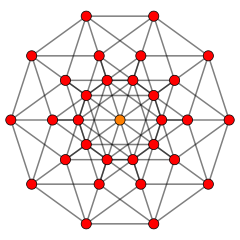Shadowprophet
Truthiness
Every physicist I've ever met. All tended to lean toward the more factual the already proven, But, While that is nice and safe and proven position.This is exactly why I detest superstring theory - it breaks the empirical thought process in the human mind by asserting its own veracity in lieu of any evidence whatsoever. It's also unfalsifiable, because there are billions upon billions of variations in the idea - one could reasonably argue that any theory which cannot be disproven is inherently unscientific. It has also failed to predict any observable effect, or to resolve any outstanding problem in the edifice of theoretical physics.
Scientific reasoning is based on evidence. Superstring theory is not only devoid of any empirical evidence whatsoever - it isn't even tangentially implied by any observation in the entire field of physics.
So by all scientific yardsticks, these theories remain 100% scientifically worthless.
I'll be the first to sing the praises of superstring theory or brane theory if or when it actually produces something scientifically meaningful. But until that happens, it's nothing more than baseless speculation, and the attention that it has commanded in both academic physics and the pop science literature remains completely unjustified. I shudder to think about the wealth of promising new theoretical ideas that have failed to garner any funding at all because superstring theories have been vacuuming up nearly all of the theoretical funding in academic programs for over 30 years.
No - this is false equivalency: relativity is supported by a profound range of empirical observations. Superstring theory is supported by none. So it belongs in the realm of theoretical mathematics, not theoretical physics, until that changes - if it ever changes.
This is another false equivalency: sveral lines of observational evidence support the extraterrestrial hypothesis; we have thousands of eyewitness accounts of AAVs, and radar tracking data (which is physical evidence), and trace evidence cases. Also, we're now aware that warm Earth-like planets orbiting Sun-like stars are common throughout the universe, and that water and the organic chemistry required for life are also common everywhere. And we also now have a viable theoretical physics model of gravitational field propulsion which offers a conceptual mechanism for faster-than-light travel and which also perfectly describes all of the performance characteristic s commonly reported by ufo witnesses.
So the existence of alien life is now a well-supported and rigorously scientific theory. Superstring theories have none of that kind of scientific support.
It's been a long time since I studied that theory, but as I recall, it was disproved because it makes predictions which are contradicted by observation.
But it's a good example that illustrates how physics have been trying to extend general relativity by adding additional dimensions, for nearly a century - and that approach has never yielded a single useful scientific advancement of any kind. Frankly I think the whole approach is unoriginal/derivative, and that's rarely how physics advances. Progress is made by striking out in new directions, not by trying to repeat somebody elses's greatest hits, which in this case, was Einstein's unification of space and time.
The next big leap will almost certainly come from somebody taking an entirely new approach that nobody has even dreamed of yet.
If it wasn't for theoretical physicists how would science ever move forward? Wasn't Einstein A theoretical physicist once. He was pretty out there for his time as I recall but then I suppose this is more Hypothetical. However, What fun is loving a subject if you can't take it's ideas and play with them?

